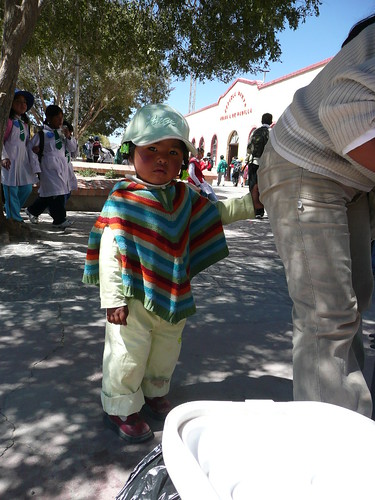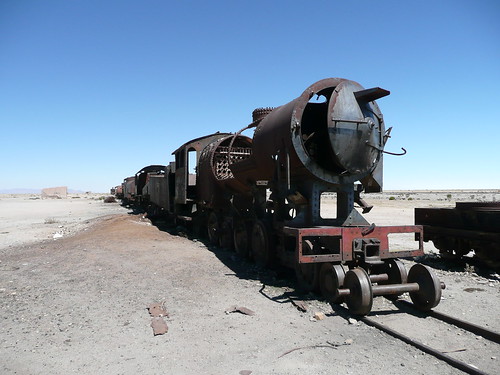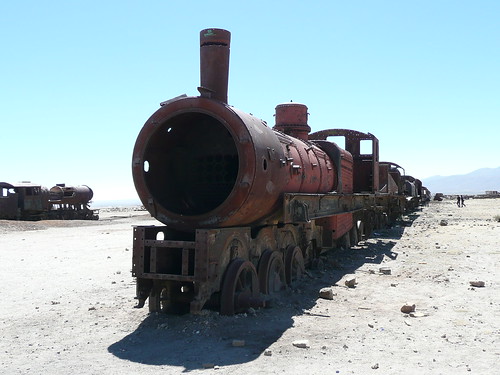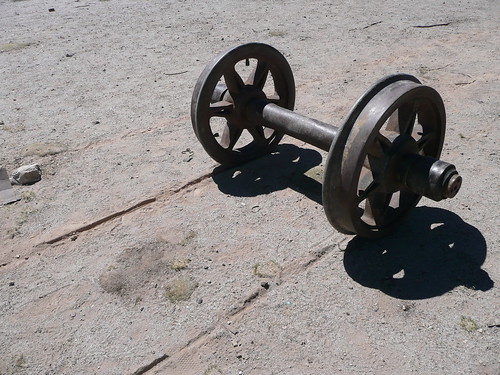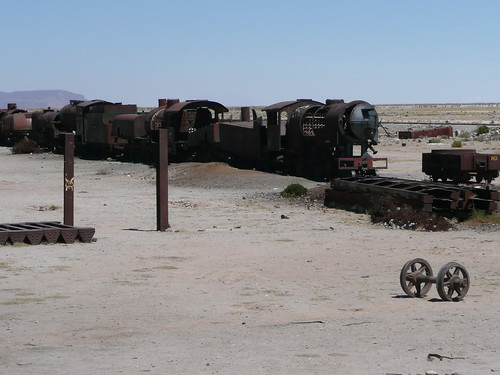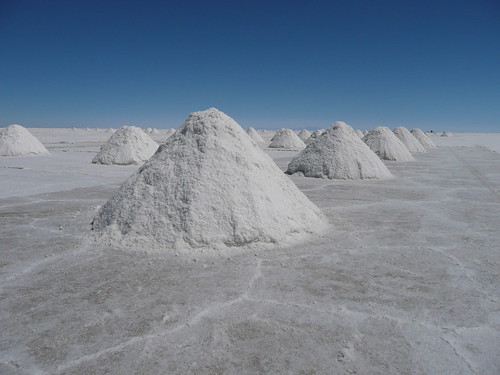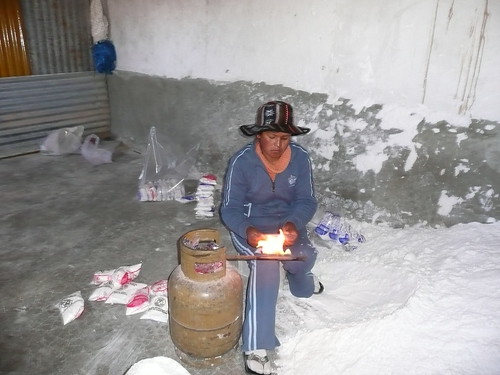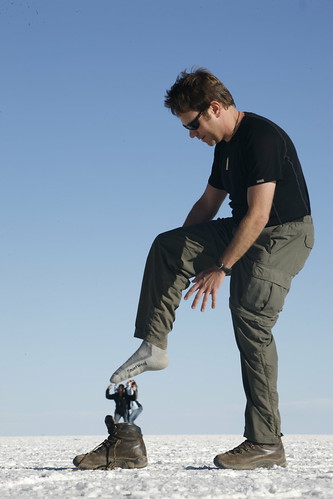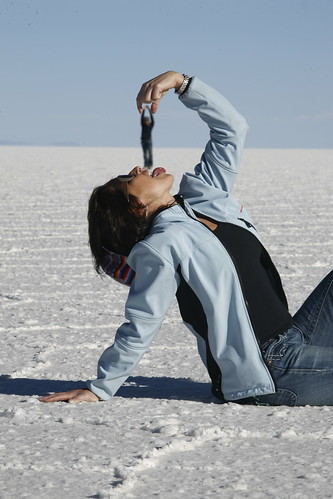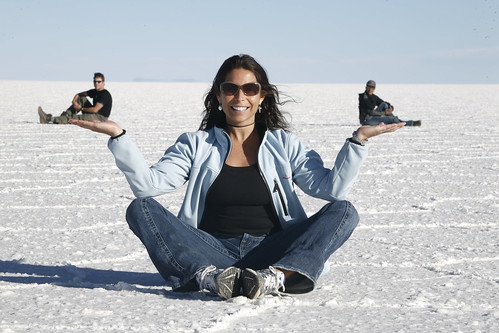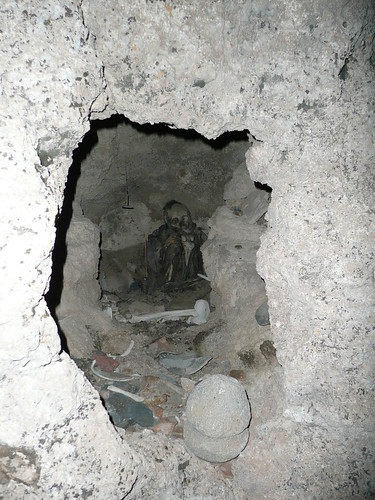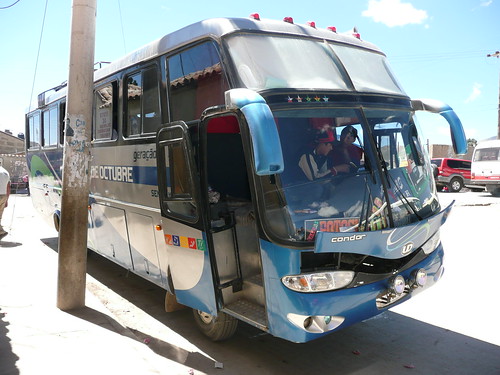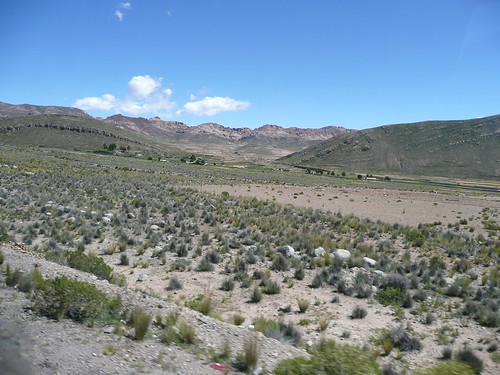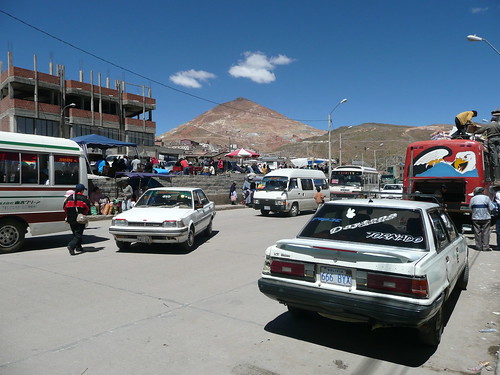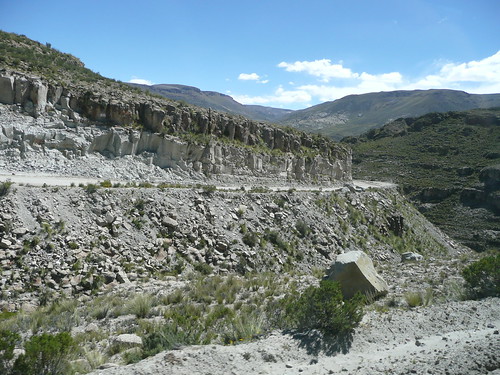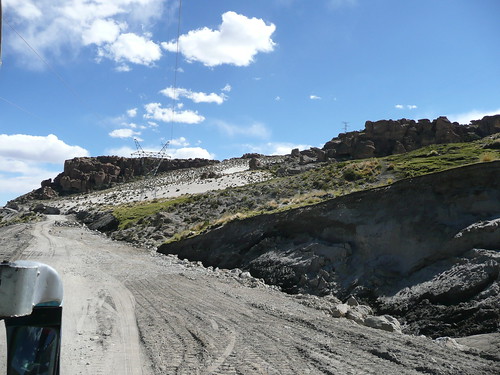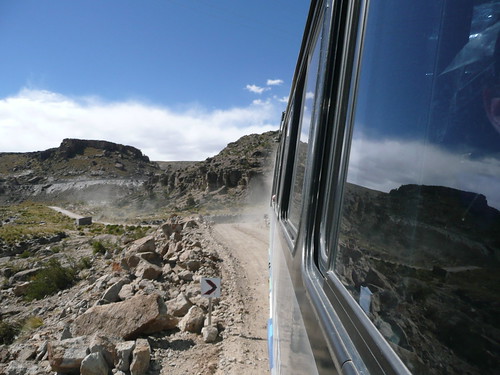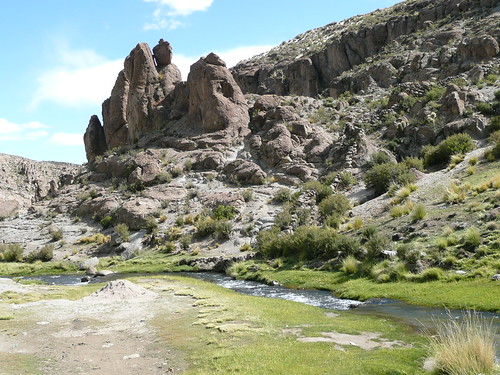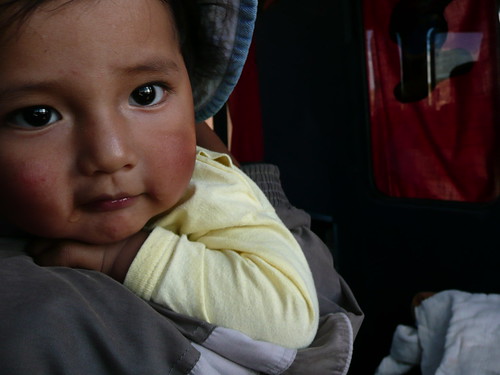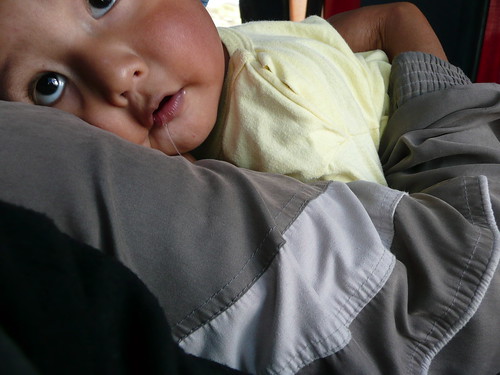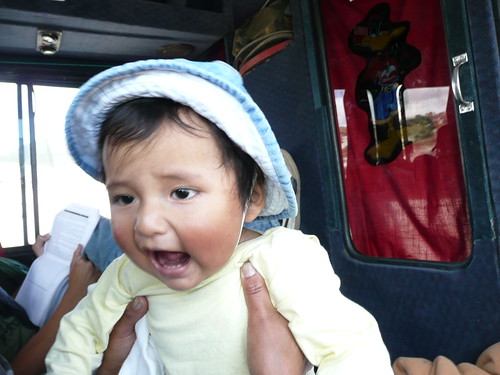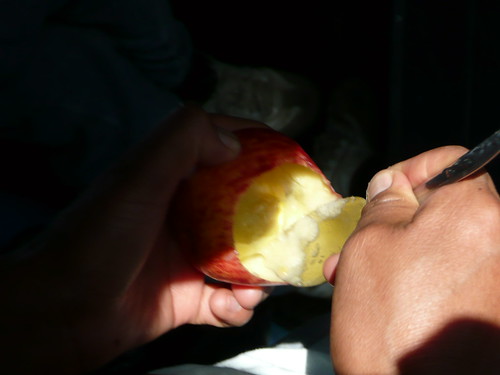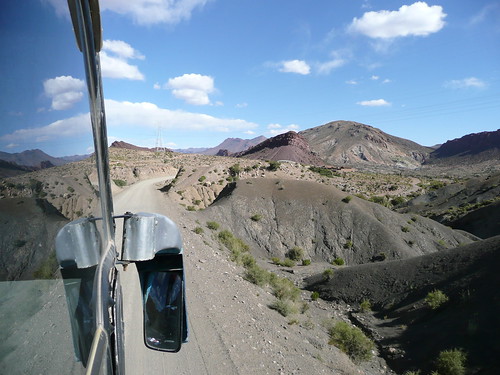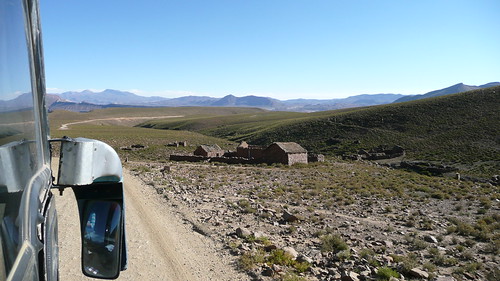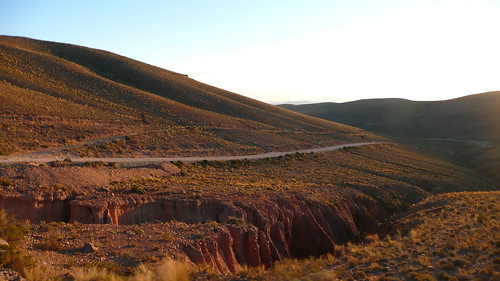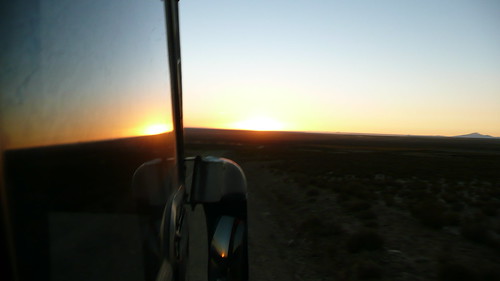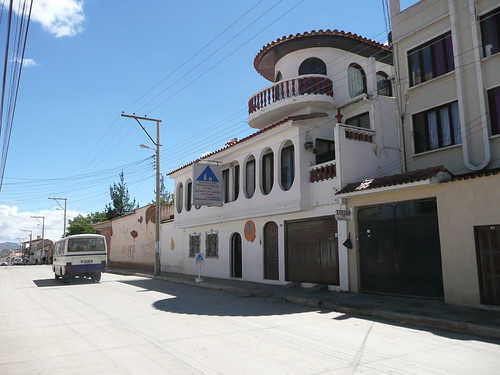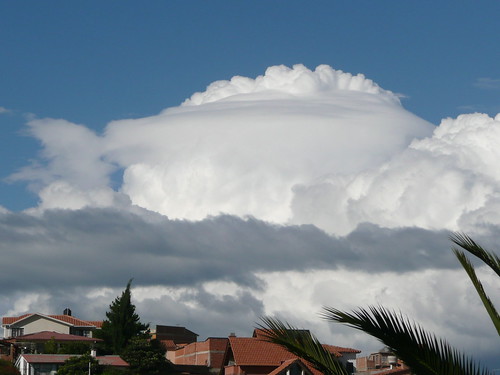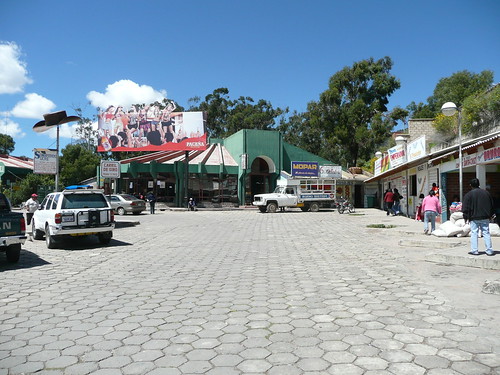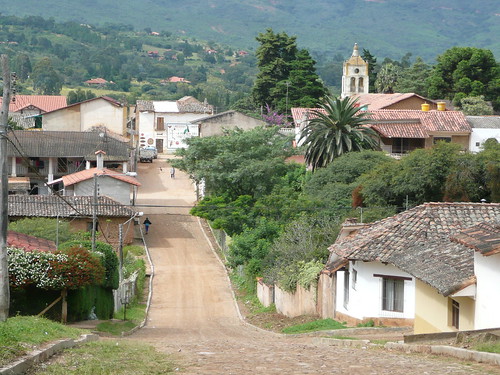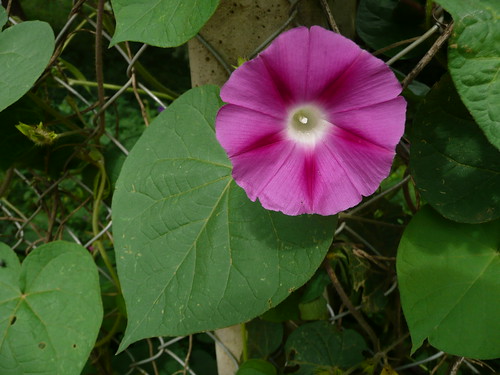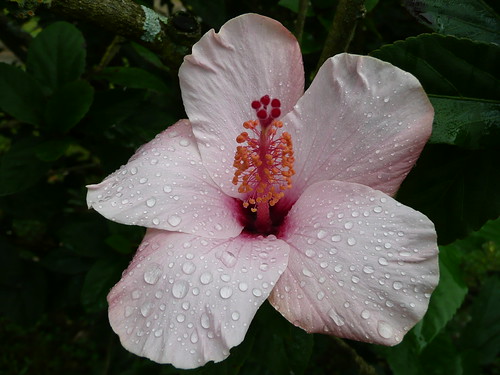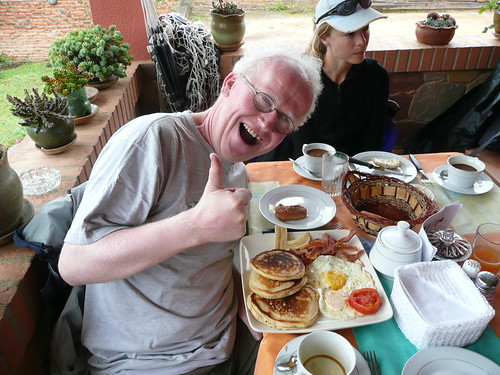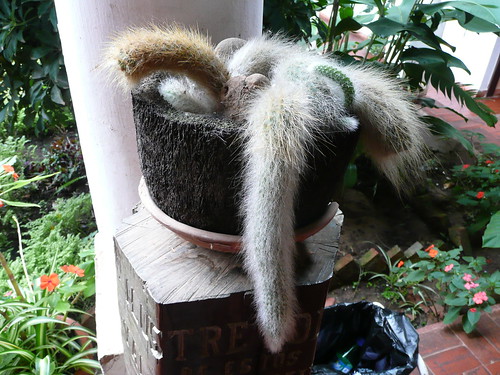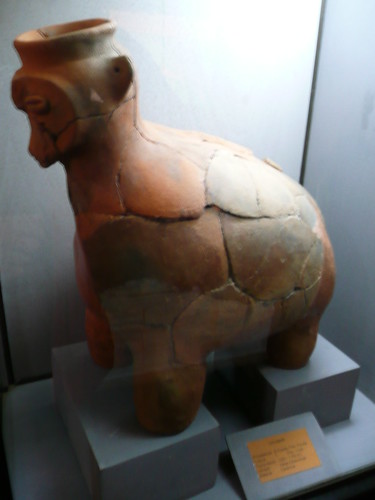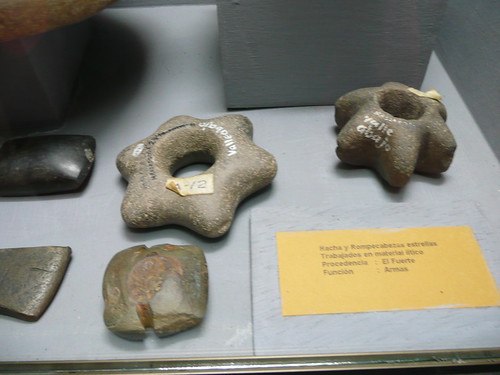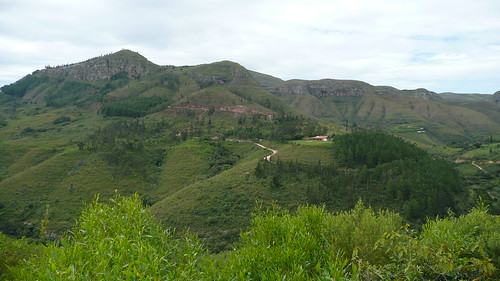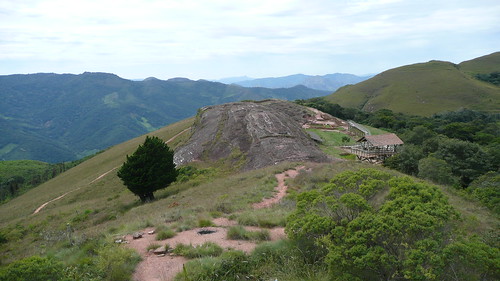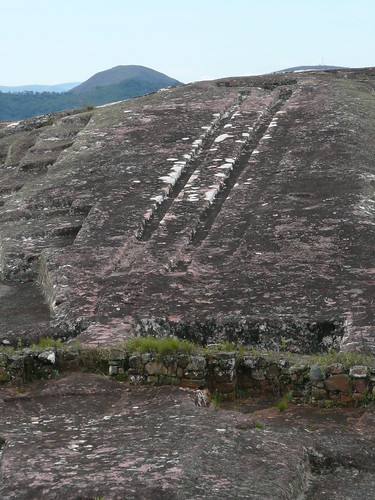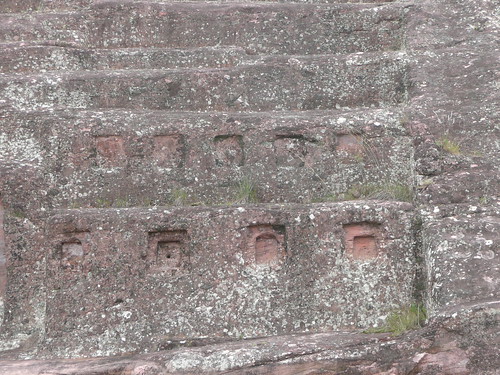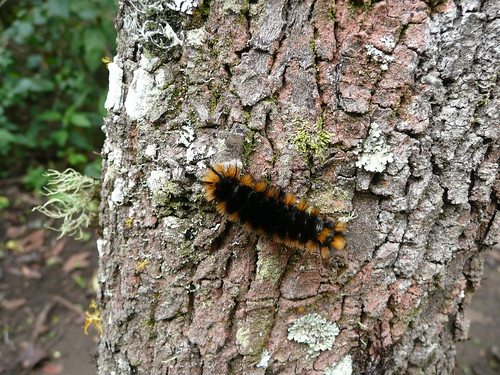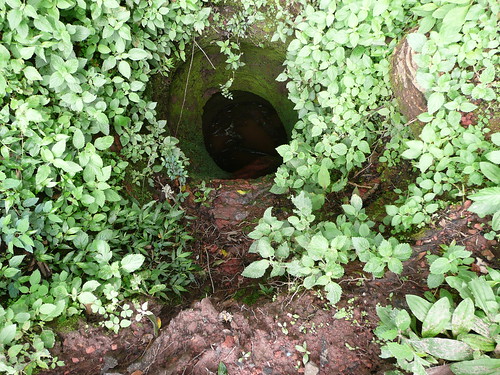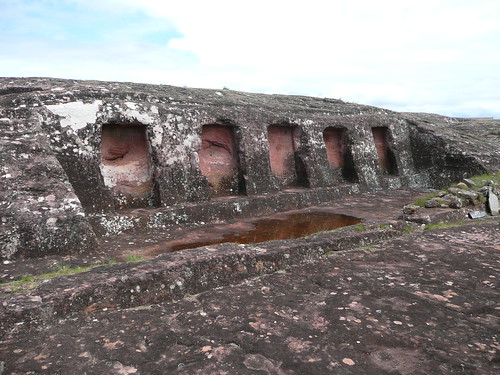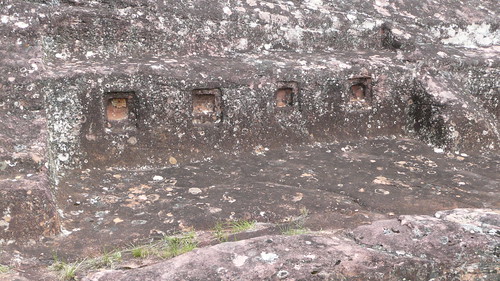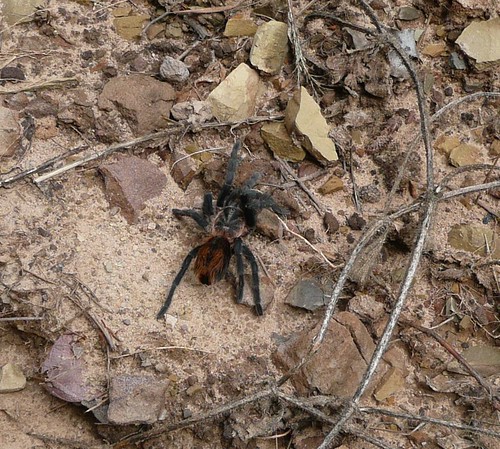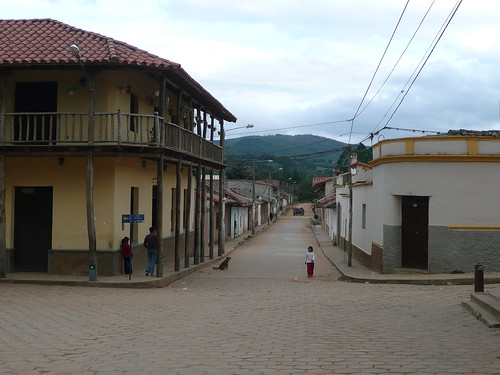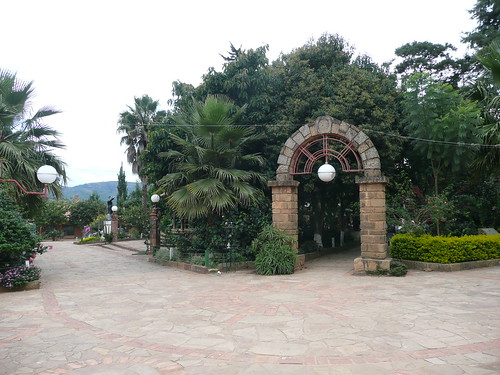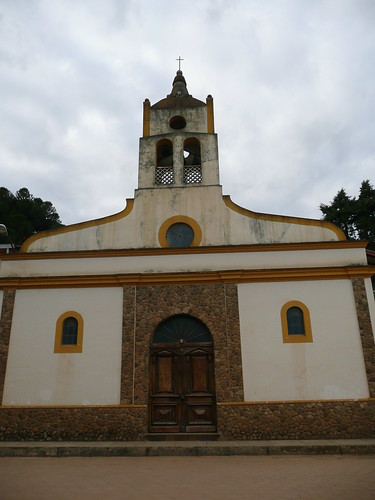The Biggest Salt Lake in the World
Emily, Steve, Lipika, and I were energized to get out of town and onto the salar. Its not every day that you get the chance to drive on the biggest salt expanse in the world. Our trusty stead was this Toyota Land Cruiser, from the early nineties.


The Land Cruiser is usually stuffed with six passengers in the two furthest back seats. The four of us had decided to go ahead and "buy out" the other two slots so that we could enjoy the scenery without playing "sardines" for three days of off-roading. To our collective surprise, we had a little bonus passenger, the cook's daughter. She was shy and really didn't want much to do with us, in the beginning.
Opposite, were the local school kids, who crowded around the truck to get a good look at the gringos. These girls loved to have their picture taken, along with the opportunity to laugh at their captured images, in the camera's LCD screen.

First on the day's itinerary was a visit to the "train graveyard". In the early part of the 20th century, the regions ailing steam trains were collected outside of Uyuni, to gradually decompose in the dry desert conditions.
Entire trains of engines and coal cars stood silently, in place, right where they had been laid to rest. Salvage seeking steel vultures have picked the cars clean of any loose materials of value.
It is a little strange to see the odd axle and wheel set, free to be pushed through the salty sands.
As a train lover, this was an eery site. The carcasses almost demanded respect, but it was beyond tempting to go ahead and climb across their spines.
The Bolivian salar is not only a natural wonder, formed when techtonic activity trapped and separated a sea of salt water from the ocean, but a source of income as well. A local co-op harvests, dries, adds the indoctrination of iodine, and distributes salt from the dried sea bed. First in the process is for the men to scrape and shovel mounds of top-layer deposits for initial drying.
The salt mounds are then transferred to a crude production facility, where wood fired drying tables finish the dehydration process. Afterward, iodine is sifted through, to avoid salt poisoning, and then women fill one kilo bags by hand. The process is hardly exacting at any stage, but the guide explained that this saline product is purely for local consumption so process control is not of high importance. In this final stage, women seal the plastic outer bags by waving the folded open end over a propane gas flame.
After the salt manufacturing tour, we headed to "fish island", which was basically an outcropping in the middle of a salt lake. During the rainy season, the salt beds are covered with water and then it becomes a "literal island". The 360 degree vistas were impressive, along with the completely naked exposure to the high altitude radiating sun. What remains impactful to me were the forests of cactus. This one and hundreds of others are over 1,000 years old! Each grows less than a meter over a 100 year period.
Our lunch was a freshly cooked feast of Llama chops, fresh salad, and a nutty grain called quinua. It was a first for consuming both the protein and grain. Llama is actually not bad and very lean. The quinua needed a little finer sifting, as the crunchy husks really weren't that tasty.
Venturing out, on foot, into the expanse made it clear how this is the largest salt lake on the planet. The texture is punishing, even through boots. The geometric crystalization process leaves a rugged diamond pointed "cheese grater" surface. To even set a knee down, for a moment, to stabilize the shot, left indentations. (For scale, each one of these larger geometric shapes is between three and five feet across.)
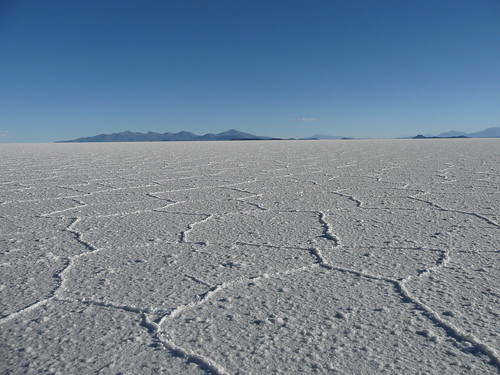
Half the fun of the salar plain is to try to trick the camera into horizon perspective illusions.
Watch out for the scary cowboy hat wearing giant.
(Thanks for the shots Steve.)
I think there's something in my boot... better check?
Emily was not only hungry, ...
... but very strong, as well.
Then there was the random, ill advised, "judo moment". I felt like Inspector Clouseau, when Kado, who is hired to keep him on his toes, constantly attacks him at the wrong time. The salt flat is not a very good judo mat and not being as sturdy as Lipika's boyfriend it ended with a bruised knee... for the judo queen. Lesson learned, its not good to doubt the prowess of a judo player because you never know when they might attack.
After our picture taking marathon, we traveled along the flats for several more hours to reach our hostel. It is amazing, with the rough and corrosive salt roads, that these trucks have any rubber left on their tires or unrusted body panels.
After dinner, we headed out in the moonless night to visit an Inca graveyard. Despite the passage of over five hundred years and the destruction of grave robbers the naturally mummified bodies are still in remarkable condition.
Even a woven peasant hat remains affixed to this guys head. It really wasn't very creepy for an perfectly dark night, in strange surroundings. We marveled at the tombs and mummies, but also took perfect advantage of the millions of stars in the crisp, clear night sky.
